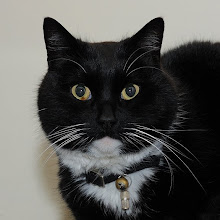About a year ago an earlier book by Goff Lumley was discussed on this blog. As the author really liked that book, given the limited scope and the presentation of regimental information by means of badges, he was happy to see a new book had hit the shelves: Ancestry and Amalgamations in the British Army 1660 - 2008. The hardcover edition is published by Partizan Press, the paperback edition by the Military Library Research Service Ltd.
However, though the book may be nice one way or another, the review given at www.arrse.co.uk is certainly too much praise.
First of all, the book has a strong tendency in interpreting the past with the knowledge of the present time. The present day regiments are taken as starting point, and predecessors are dealt with under that header. Though not terribly bad, a more chronological treatment might have given the reader a better understanding of the growth and life of the British Army.
Secondly, Lumley does not address disbanded regiments of the late 17th and early 18th centuries. That is common with such works, unfortunately. By omitting the regiments that played such an important role in the Nine Years' War and the War of the Spanish Succession, and in bringing the British Army to maturity, the picture of the British Army is incomplete.
As a third point of comment Lumley seems to have been sloppy on a number of details (probably copied mistakes from others). For example, the lineage of the 3rd Regiment of Foot is not correct: the four English regiments in Dutch service did not merge in 1648, and were strictly speaking not disbanded in 1665. Another example is the ranking of the 1st Regiment of Dragoons as 1st as early as 1674! What was to become the Royal Regiment of Dragoons in 1683 was surviving in 1674 in Tangier as horse. And it was in 1674 probably by no means sure that this regiment would survive Tangier, or that it would become dragoons.
A further remark is the lack of a proper introduction. The introduction given informs the reader about the greatness of regiments (the cameraderie, the espirit the corps) and how welcome this book is. It does not tell anything about the origin of the British Army, except that it started in 1660/61. As to dates, the author only gives the year for mergers/amalgamations. Since more detailed information on dates is known, it is a pity Lumley did not put that in.
Finally it should be remarked that the author could have done better with respect to names of colonels. It should be praised that he included the names of colonels of regiments prior to 1751 (a thing often omitted by other authors), but it would have been better had he given full names and titles. As they are presented now it will only confuse people. Also, Lumley exhibits too much an insular English-only attitude towards the history of the British Army, an attitude witnessed by too many other authors of books on the British Army.
To summarize, the book is somewhat a disappointment. With respect to badges, the book is full with pictures of badges which is indeed nice. With respect to (new) information the book is not so new and seems more like a repetition of facts, including some mistakes, compiled in other books. As a positive point the facts on amalgamations after say the 1750 seem to be ok, and Lumley's use of badges to show merges and regimental history is nice.
Those with some interest in the British Army would certainly like the book, and would be easily overwhelmed by it. However, for the more serious student of military history and the British Army the book does not present new information or new insights.
Subscribe to:
Post Comments (Atom)




1 comment:
Well pretty soon with the amalgamations going the way they have been, I predict the wargamers using 1 figure equals one man, and those with the 24-man regiments, will both be right at the same time, eventually.
All they need to do is lower the establishment to platoon strength per regiment, and can even bring back the old ones then.
Good fair review to balance out the arrse version.
Post a Comment